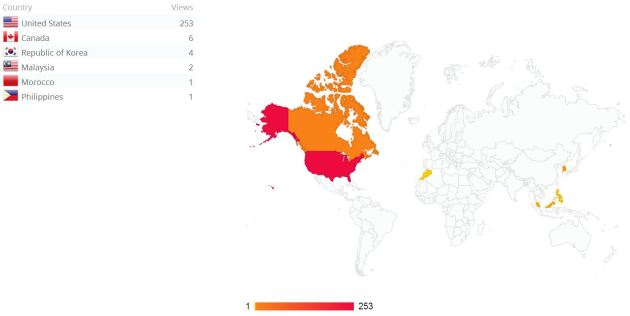
Michael Brown’s picture in his graduation cap and gown, holding his Normandy High School diploma, from this online article.
Darren Wilson, has been named as the police officer who shot Michael Brown, an unarmed teenager, on August 9, 2014. This shooting occurred 2 years, 5 months, and 14 days after an unarmed, teenaged Trayvon Martin was shot and killed by George Zimmerman, a neighborhood watch coordinator. Unfortunately, this scenario has become commonplace; an African American being subjected to police brutality, excessive force, and even death.
Perhaps this is why 42 U.S.C. § 1983, referred to as “Section 1983,” which is part of the Civil Rights Act of 1871, is still in use today. Section 1983 allows governmental actors, including police officers, to be liable for damages, declaratory, or injunctive relief for violating a citizen’s rights, such as the Freedom from Excessive Force under the Eighth and Fourteenth Amendments. Sadly, this legislation, also known as the “Ku Klux Klan Act,” which was used to prevent racial hate crimes in the 1800s, is still needed today to deter racial injustices, often at the hands of the police, who are supposed to protect us.
Functionally, Section 1983 serves as a method to deter governmental officers from violating citizens’ rights. This often comes in the form of making governmental officers pay money for inflicting personal injuries, including wrongful deaths, on citizens, when it was not warranted. Is any amount of money going to lessen the loss of the Brown family? Understandably not. And what good is deterrence after the fact? Unfortunately, this is just how our judicial system works in our society that values money.
Below are excerpts from articles involving Michael Brown:
“The ghost of Dred Scott haunts the streets of Ferguson,” was written by Amy Goodman with Denis Moynihan (ellipses omitted and bracketed information added):
Thousands have been protesting the police killing of Michael Brown, an unarmed African-American teenager in the St. Louis suburb of Ferguson. He was due to start college just days after he was shot dead in broad daylight. Police left his bleeding corpse in the middle of the street for over four hours, behind police tape, as neighbors gathered and looked on in horror. Outraged citizens protested, and police brutally cracked down on them. Clad in paramilitary gear and using armored vehicles, they shot tear gas, rubber-coated steel bullets and flash-bang grenades, aiming automatic weapons at protesters. Scores of peaceful protesters as well as journalists have been arrested.

Portrait of Dred Scott from this Wiki article.
The protests have raged along Ferguson’s West Florissant Avenue. Four miles south of the protest’s ground zero, along the same street, in the quietude of Calvary Cemetery, lies Dred Scott, the man born a slave who famously fought for his freedom in the courts. The Dred Scott decision of 1857 [Scott v. Sandford, 60 U.S. 19 How. 393 393 (1856)] ruled that African-Americans, whether slave or free, could not be citizens, ever.
Scott was born into slavery in Virginia around 1799. Scott’s owner moved from Virginia, taking him to Missouri, a slave state. He was sold to John Emerson, a surgeon in the U.S. Army [and was subsequently taken to free states and territories]. In 1847, Scott sued Emerson for his freedom in a St. Louis court. In the U.S. Supreme Court’s majority opinion, Chief Justice Roger Taney, a supporter of slavery, wrote, “A free negro of the African race, whose ancestors were brought to this country and sold as slaves, is not a ‘citizen’ within the meaning of the Constitution of the United States.” Thus, the court ruled that all African-Americans, whether slave or free, were not citizens, and never would be.
The people of Ferguson demand justice for Michael Brown, including the arrest of Ferguson Police Officer Darren Wilson, who killed Brown. A number of groups are calling for a special prosecutor to take over the case, the removal of the National Guard and a Justice Department investigation into every shooting of an unarmed person of color.
On Monday, August 18, 2014, Democracy Now reported that 1,300 people packed the Greater Grace Church for a rally attended by Michael Brown’s parents. Brown’s cousin Ty Pruitt addressed the crowd: “So, before I say anything, [raises hands in air]. I just wanted to kick it off like that, because what I want you all to remember is that Michael Brown was not just some young black boy. He was a human being. He was a younger cousin. He was a son. He was an uncle, a nephew. He was not a suspect. He was not an object. He was not an animal. But that’s how he was killed.”
While the verdict is still a whiles away for Darren Wilson after a jury hears all of the evidence presented for the case, I fear that justice will get lost in our deeply rooted history of racial inequalities, that Michael Brown will not be portrayed as a human being, and that this will lead to race riots (like the 1992 Los Angeles Riots after the acquittal of the police officers, who beat Rodney King). I wish there were solutions to end racial injustices and oppressive policing. I wish that we didn’t need Section 1983 to remedy the wrongs that our government commits on our citizens. I wish our society would finally treat all of its citizens as citizens. For now, let’s keep our eyes on the prize and keep on marching towards our Civil Rights and racial justice for all.




